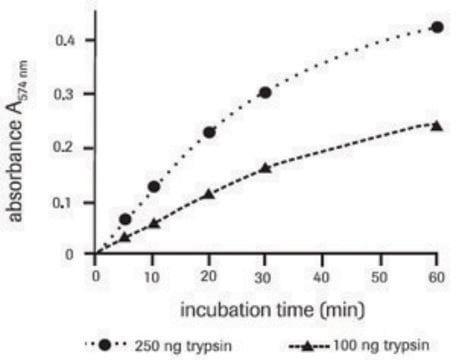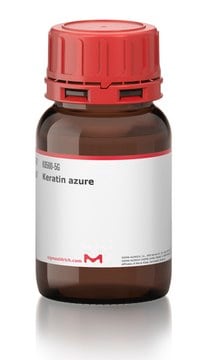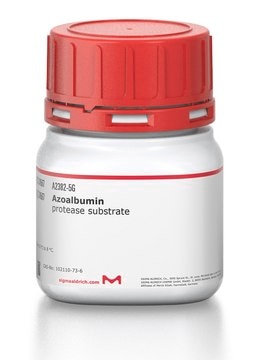A2765
Azocasein
protease substrate, chromogenic, powder
Sinonimo/i:
Sulfanilamide-azocasein
About This Item
Prodotti consigliati
product name
Azocasein, protease substrate
Origine biologica
bovine
Forma fisica
powder
tecniche
ligand binding assay: suitable
Solubilità
water: 5 mg/mL, clear, orange to very deep orange
ε (coefficiente d’estinzione)
≥25 at 440 nm in 0.1 M NaOH at 1%
Temperatura di conservazione
2-8°C
Descrizione generale
Applicazioni
Linkage
Codice della classe di stoccaggio
11 - Combustible Solids
Classe di pericolosità dell'acqua (WGK)
WGK 3
Punto d’infiammabilità (°F)
Not applicable
Punto d’infiammabilità (°C)
Not applicable
Dispositivi di protezione individuale
Eyeshields, Gloves, type N95 (US)
Certificati d'analisi (COA)
Cerca il Certificati d'analisi (COA) digitando il numero di lotto/batch corrispondente. I numeri di lotto o di batch sono stampati sull'etichetta dei prodotti dopo la parola ‘Lotto’ o ‘Batch’.
Possiedi già questo prodotto?
I documenti relativi ai prodotti acquistati recentemente sono disponibili nell’Archivio dei documenti.
I clienti hanno visto anche
Il team dei nostri ricercatori vanta grande esperienza in tutte le aree della ricerca quali Life Science, scienza dei materiali, sintesi chimica, cromatografia, discipline analitiche, ecc..
Contatta l'Assistenza Tecnica.










